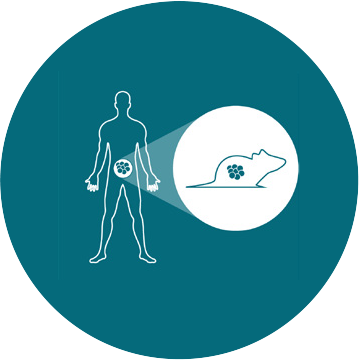What is Acute Myeloid Leukemia (AML)?
Acute Myeloid Leukemia (AML) is an aggressive blood cancer that originates in the bone marrow, causing rapid proliferation of abnormal white blood cells. AML is a highly heterogeneous disease, making preclinical and clinical research essential for discovering effective treatments.
Why is AML research critical for drug development?
AML has a high relapse rate and limited treatment options. Developing novel AML therapies, including targeted therapies, immunotherapies, and combination treatments, requires robust preclinical AML models and biomarker-driven research to improve patient outcomes.
How does Crown Bioscience support AML drug discovery and development?
Crown Bioscience provides comprehensive preclinical AML research services, including in vitro AML assays, in vivo AML models, AML patient-derived xenografts (PDX), and AML biomarker analysis to accelerate oncology drug development.
What types of preclinical AML models are available?
We offer a diverse range of clinically relevant AML models, including:
- Primary patient samples
- Patient-derived xenografts (PDX models)
- Cell line-derived xenografts (CDX models)
- Syngeneic AML models
- These models enable predictive AML drug testing, supporting the evaluation of targeted therapies, small molecules, and immunotherapies.
Why are AML patient-derived xenograft (PDX) models important for drug testing?
AML PDX models closely replicate patient tumor heterogeneity and disease progression, making them highly predictive for preclinical AML drug screening and precision medicine research.
What functional assays do you offer for AML drug screening?
We provide a range of high-throughput AML assays to evaluate drug efficacy, including:
- AML cell proliferation assays
- Cytokine profiling for AML immunotherapies
- AML drug resistance studies
How does Crown Bioscience support biomarker discovery in AML?
Our advanced multi-omics capabilities, including genomics, transcriptomics, and proteomics, help identify and validate AML biomarkers, supporting companion diagnostic development and patient stratification.
Can you design a custom AML preclinical study?
Yes! We provide fully customizable AML study designs to support your specific research objectives, including target validation, efficacy testing, and combination therapy evaluations.
What types of AML therapies can be tested using your models?
Our models support AML drug development across multiple therapeutic modalities, including:
- Small molecule inhibitors
- Monoclonal antibodies (mAbs)
- Bispecific antibodies
- CAR-T and other cell therapies
- Epigenetic and immune checkpoint inhibitors
How translational are Crown Bioscience’s AML preclinical models?
Our AML models are designed for high clinical translatability, with patient-derived and humanized systems that enhance predictive AML drug research and facilitate successful IND submissions.
How does Crown Bioscience ensure high-quality, reproducible AML study results?
We adhere to strict quality control measures, including:
- Standardized AML study protocols
- Experienced scientific oversight
- State-of-the-art imaging and analytics
How can I get started with an AML research study at Crown Bioscience?
Contact us today to discuss your AML drug development needs! Our expert team will help design a study tailored to your research goals.







.png?width=800&height=852&name=full-image(1).png)









